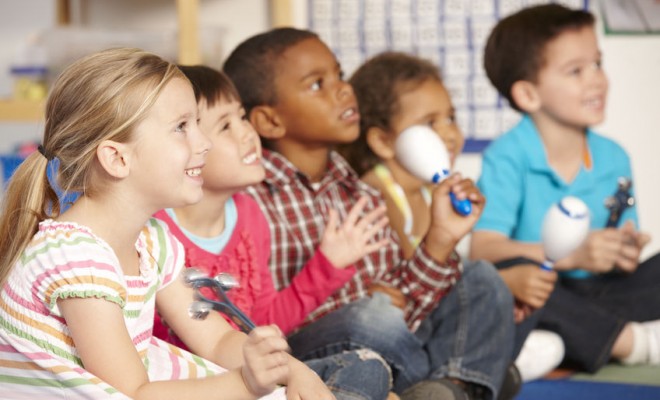
Childcare Activities
You Don’t Have to be a Specialist to Teach Early Years Music
Many early years professionals still find the idea of using music in their practice extremely daunting. Though one can sympathise with adults who may feel they lack the necessary skills and confidence to do this, non-specialists should never see the major aim of EYFS music experience as being the interaction between children and skilled subject specialists. But let’s look first at how that music experience begins …
Cradle music
From the moment an infant can hear – which we now know is long before birth itself – that child begins to respond to sound and music. This newborn infant then enters a buzzing, full-spectrum audio world containing every sound imaginable from soothing whispers through to disturbing bangs and crashes. Each of these elements evokes an emotional response, and soon a vocal one as the child realises he can initiate as well as receive these audio messages.
And so a sonorous dance of delight begins; the baby cooing, babbling and gesturing, and parents echoing, elaborating and ever extending the child’s efforts. Musicians call this deeply satisfying interaction ‘call and response’, a universal pattern which underpins musical performance and composition in all cultures, as well as providing a basic framework for language. This discourse initially requires no words, and the child will remain receptive to music’s strange primaeval power to influence our thoughts and feelings at sub-language levels throughout life.
Early years music as a mode of learning
The growing child learns and develops in an environment which often continues to embrace and build upon those early musical experiences. Rhymes, songs and movement are interlinked to develop language and physical skills, while the vocal content teaches an expanding range of knowledge and life skills, such as counting and colours, which will later drive the formation of more complex educational concepts.
Using music as a means to ‘transfer’ knowledge mimics the natural role music plays in a child’s early life and, according to Greenhalgh (2015), most music in EYFS settings tends to offer a combination of three primary functions:
‘a) Early education through music and singing – music and singing provide an enjoyable way for the children to learn about counting, colours, shapes, listening & language, sharing, turn taking, etc.
b) Learning about music – exploring musical concepts and sounds and developing skills; singing, experiencing playing instruments, keeping a steady beat, etc. Non-music learning also takes place in these enjoyable sessions.
c) Enjoyment and having fun – a time for children & parents/carers to share some quality time together. Formal learning is not the main priority.’
And when asked to indicate the primary objectives of these music-related activities, practitioners rated the order of priority as shown in Figure 1.1, indicating that participants in this study clearly valued the fun aspects, and that, whilst not lacking importance, learning about music was the outcome of least concern:
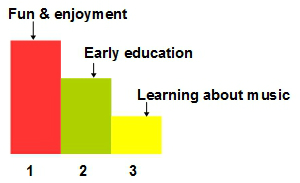
Figure 1.1 Aims of musical activities (Inspired by Greenhalgh, 2015)
A mode of teaching
Non-specialists should take heart here because the EYFS framework makes no specific demands as regards the nature of music skills acquired by children and above all promotes a model in which music, among other approaches, becomes a natural vehicle for nurturing holistic child learning and development. In keeping with the absence of music-specific outcomes, any practitioner should find the demands of incorporating music-flavoured learning content have much more to do with good educational practice than they do with the skills of a musical entertainer or instrumental teaching professional – which is not to disparage those talents but to highlight the EYFS context, aims and expectations.
EYFS Developmental Milestones – Download Free eBook
When introducing music content, practitioners should adopt a confident approach, which like any teaching exercise means good planning and preparation – such as thoroughly learning the words of a song. This then allows you to maintain good eye contact with the children which will help them to focus and stay involved. Fun should be the paramount aim and will take the pressure off anyone (including the teacher) to demonstrate expertise at every turn.
In such sessions, it’s important to include everyone, but never focus the spotlight on individuals unless you are certain they will shine. Collaboration and communication should be the default mode of operating, and music lends itself to plenty of repetition which also helps to facilitate learning. Introduce a little core music vocabulary when feasible and relevant (e.g. pitch: high/low; pace: fast/slow) but don’t overdo it.
Some non-specialist strategies
The following are some practical suggestions as to how practitioners might feature music in an early years setting, or perhaps develop existing provision arrangements:
Collaborate with another adult – Music sessions often flow better for a non-specialist with one ‘leader’ directing and another executing rhythms, playing chords or operating equipment etc. This can improve the experience for the children, reduce technical demands, and/or allow the introduction of more complex examples – and offer moral support.
Sing, chant, move – The voice is the most accessible musical instrument of all, and many cultures (e.g. African music) require nothing more than voices, movement, stamps, hand claps, finger clicks and boundless enthusiasm.
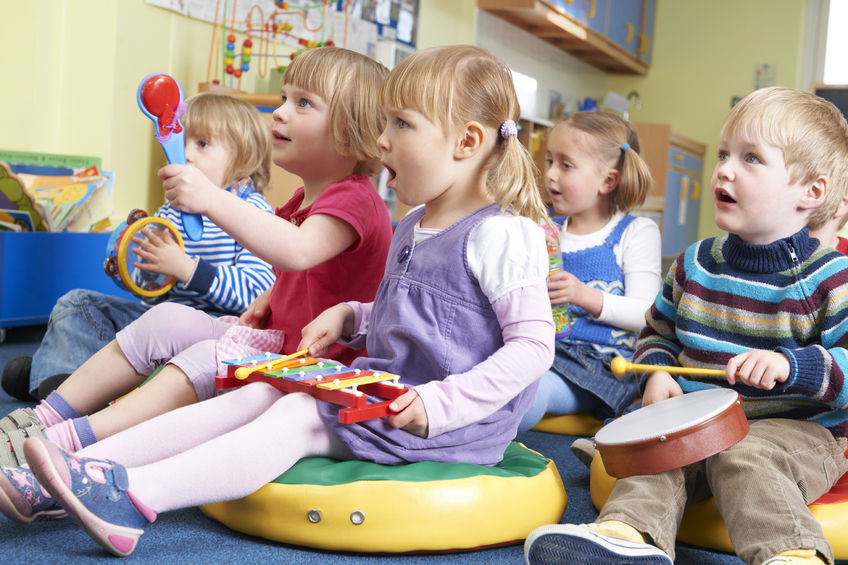
Use non-pitched percussion – There is a broad range of standard and exotic percussion type instruments available to develop ensemble activities both formal and creative improvised soundscapes (e.g. how about a rainforest with wind, dripping rain, calling birds and fierce wild animals, a violent storm, then calm as night falls and the forest sleeps …)
Junk percussion and instruments – A complete subject on its own! Build some simple instruments as a project for children, or ask for upgraded versions via a handicraft task for enthusiastic parents. Lots of cross-curricular and home-links potential here.
Media soundtracks – Use short video clips featuring cartoons or evocative images, and help children to devise sound effects and soundtrack accompaniments (e.g. a cartoon character falls, a lumbering elephant, chattering monkeys, etc.)
Recorded music – Regularly feature music for listening or just to create an ambient background for other activities. If this uses a themed/structured approach, children’s musical experience can be vastly extended over time provided that any focused listening uses an appropriate ‘active listening’ approach e.g. ‘Stand up when you first hear the drum’.
Multimedia performances – Use music performance and instruments to add songs, sound effects etc. to mini plays or for animating a nursery rhyme. Be prepared to find ways to incorporate children’s own ideas. If you have the facilities, record and playback the results.
IT devices and software – There is a host of child-oriented software programmes which promote musical engagement. For preference, choose examples which support work done elsewhere rather than introducing too many new themes which can’t be followed up.
Live performance – If you have a skilled parent, staff colleague, or sympathetic local musicians network, nothing can match the magical experience of witnessing an occasional live performance. In a perfect world, over time you would look for a mix of solo and ensemble performances plus some contrasting styles. Solo performances are a good introduction because children will initially find it easier to become acquainted with the sound and character of one instrument alone. Arguably, there is little purpose in “introducing” little ones to a new instrument they have never played or heard live.
Music workshops – If there is a budget to cover the cost, a visit from musicians experienced in delivering early years workshops is money well spent. It can build upon your own approaches, will enthuse every child, and should also give you some more ideas and valuable first-hand experience of professional techniques – curriculum support and staff training and development all in one package.
Share your learning – If you have the time, enthusiasm and courage, take up an instrument and share your progress with the children. There is nothing unprofessional about advancing your knowledge in such a way, and the benefits for the children include hearing, and seeing a live instrument from time to time, and your modelling of the learner’s role.
EYFS-focused music scheme – Consider purchasing a published music scheme for the EYFS phase. This could even be used as your main resource (choose one which offers the useful advantage of a CD containing music examples and song accompaniment tracks), or to supplement your own material. Because of the costs involved, it is essential to first ensure any music scheme you plan to buy employs material which will suit the style of teaching and activities you propose to introduce.
Holistic learning
Provided the fun element is allowed to remain paramount, early years children stand to gain a lifelong appreciation of the delights of a range of music, and some may even be drawn to a closer study of the subject. For all, the experience will be an opportunity to learn a broad spectrum of skills and knowledge by a subtle process of osmosis which Gower summarises as follows:
‘… the benefits of whole-class music making don’t necessarily lie in just playing [or singing] the right notes at the right time. There’s another level of broad, transferable learning happening, and it’s happening in music lessons being led by specialists and non-specialists alike. I’ve seen counting skills, listening skills, collaboration, focus, coordination, increased memory and improved well-being, among many other benefits – none of them expressly musical.’ (Gower, 2016)


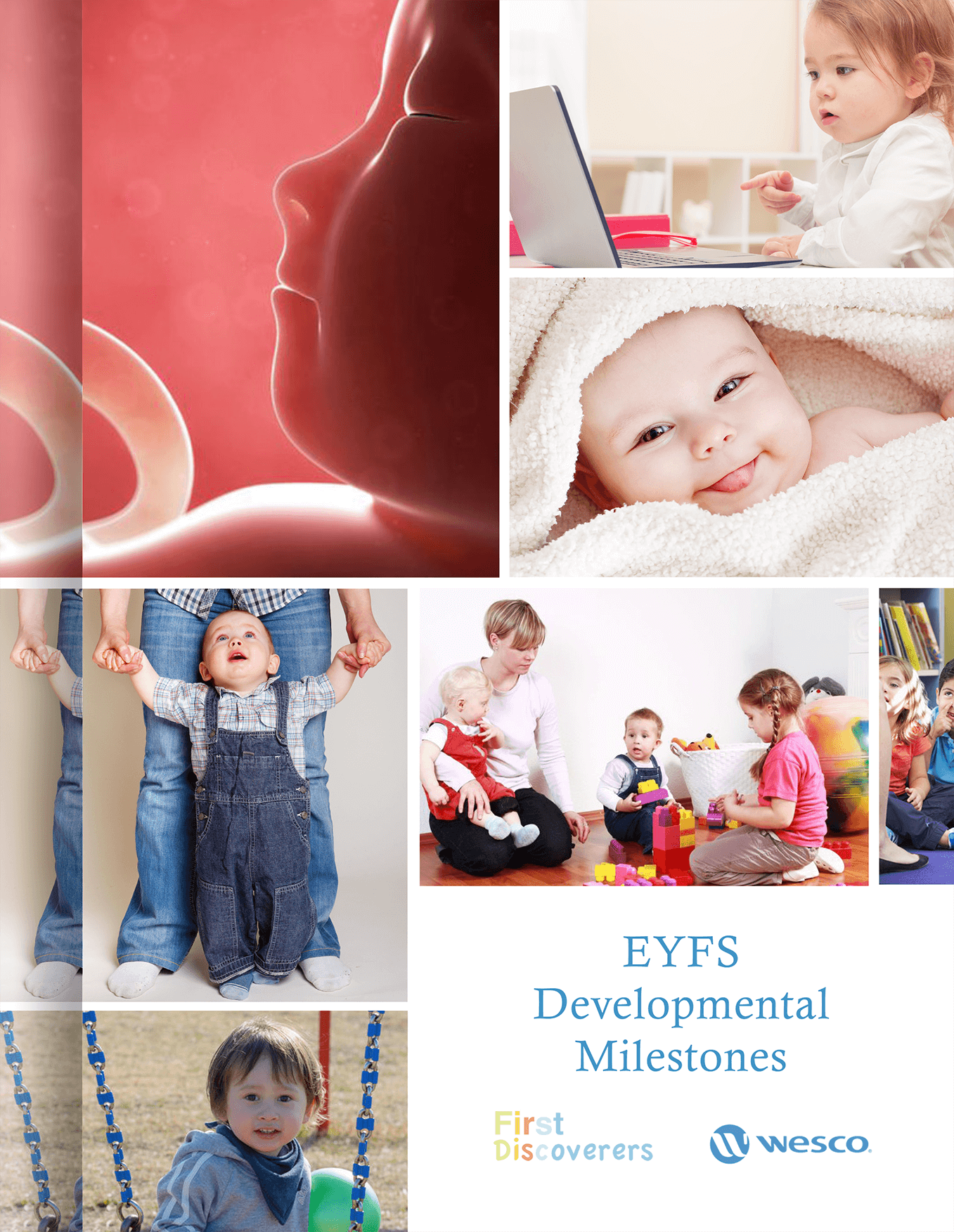
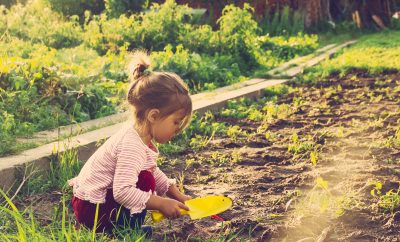
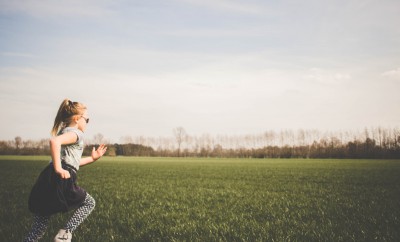
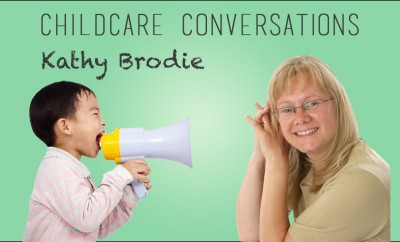

You must be logged in to post a comment Login